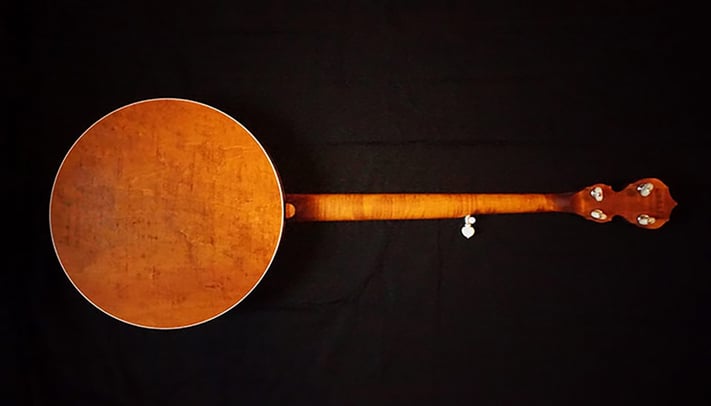Deering Banjo Company has a custom option of an oil finish for our banjos. We only used boiled linseed oil when this type of finish is requested.
Linseed oil is not a new finish. It has been used for decades to enhance, preserve and protect wood and other surfaces. Linseed oil deeply nourishes the wood while providing a flexible protection that is waterproof and abrasion resistant. This is not to say we want you leaving your banjo out in the rain or whittling on it with your knife! But the boiled linseed oil finish Deering uses on your banjo will protect the wood. This article is to help give you some insights into the finish and how you can best preserve it over the lifetime of your ownership of your precious banjo.

The key features of linseed oil are:
It is important to apply this finishing oil only on bare or previously oiled wood, since any other finish such as paint, varnish, or wax can prevent the penetration of the oil. When your banjo was created at the Deering factory, the wood of your neck would have been bare. Several coats are applied to the neck with drying time in between coats. When the last coat is dry, a light hand polishing with a dry cloth is done. This enhances the satin finish and the smooth texture.
Maintenance will have to be done about once a year or according to the wear of the finish. Dry looking or discolored wood is a good indicator that you need to reapply a light coat of oil. Simply clean the surface with a damp cloth, let dry completely and apply the boiled linseed oil, wiping all excess oil after 5 minutes at most.
Always store boiled linseed oil in metal containers. You can pour it into plastic containers for temporary use, but for long term storage it should be in a metal container.
Any rags soaked with boiled linseed oil should be laid flat on a non-flammable surface away from flammable items until they are completely dry or they can be placed in a metal container with water.
If the proper precautions are not taken, an exothermic chemical reaction causing spontaneous combustion can happen. Here’s what happens: boiled linseed oil cures by a chemical reaction with the surrounding oxygen in the air not by evaporation like water based finishes. This reaction generates heat like most chemical reactions. The heat generated can be intense in certain circumstances and can lead to spontaneous combustion.
The most common source of boiled linseed oil fires is from a wadded up rag that has been soaked with linseed oil and then thrown in the trash with wood dust, newspapers or other kindling. Since it is wadded up it generates more heat because there is no air to pass over it and cool it. It then heats up to the flash point of the surrounding materials and the fire starts.
The general precaution of washing your hands before playing your banjo is still a great practice even with a linseed oil finish. Keeping the banjo away from moisture or excessive heat is also important to prevent wood shrinkage/expansion. Despite the fact that the wood of your banjo is not “on the tree”, it is still reactive to the environment. Your linseed oil finish is meant to protect the wood against normal environmental factors, not extremes. Re-applying the boiled linseed oil to enhance that finish is a good idea and safeguarding your own protection is paramount when disposing of the rags used to apply the boiled linseed oil finish.
We hope that these few details have helped you better understand the facts about linseed oil finishes and how you can protect them through the years. Enjoying your playing time with your banjo is the final and most important goal of all!
For more on how to use boiled linseed oil safely, click here.
3733 Kenora Dr.
Spring Valley, CA 91977
COMMENTS